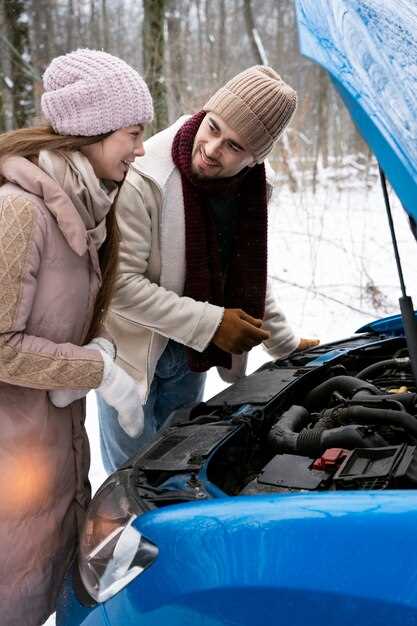
As the winter months approach, classic car enthusiasts face the crucial task of preparing their beloved vehicles for the colder season. Proper winter storage is essential to ensure that your classic car remains in pristine condition, free from the damaging effects of harsh weather and road salt. Without adequate preparation, your vehicle could suffer from a range of issues, including rust, battery drainage, and fluid deterioration.
In this article, we will outline essential tips for winter storage that every classic car owner should consider. By following these guidelines, you can safeguard your investment and enjoy peace of mind, knowing that your classic car will emerge from hibernation ready to hit the road. From cleaning and maintenance to indoor storage solutions, we will provide you with a comprehensive approach to winterizing your vehicle.
Understanding the specific needs of your classic car is key to effective winter storage. Factors such as climate, make, and model can all influence your storage strategies. Therefore, it is vital to tailor your approach to your vehicle’s unique characteristics, ensuring that you address its individual requirements for the winter months.
Preparing Your Classic Car for Long-Term Winter Storage

Properly preparing your classic car for long-term winter storage is essential to maintain its condition and value. Follow these steps to ensure that your vehicle remains in optimal shape during the cold months.
1. Clean the Exterior and Interior
Start by washing and waxing the exterior of your car to protect the paint from corrosive elements. A thorough cleaning will remove dirt, grime, and any debris that could damage the finish. Don’t forget to clean the wheels and tires as well. Inside, vacuum the upholstery and carpets, and consider using a fabric cleaner to eliminate any stains. This will prevent mold and odors from developing in the confined space.
2. Change the Oil and Fluids
Old oil can contain contaminants that may harm the engine if left unchecked. Change the oil and replace the oil filter to ensure your engine is protected. Additionally, top off all other fluids, including coolant, brake fluid, and windshield washer fluid, to prevent moisture accumulation and corrosion.
3. Fuel Stabilization
Add a fuel stabilizer to your gas tank and fill it up to prevent condensation from forming inside the tank. This action reduces the likelihood of rust developing inside the fuel system. Run the engine for a few minutes to ensure the stabilized fuel circulates throughout the system.
4. Battery Maintenance
If your car will not be started for an extended period, consider disconnecting the battery to prevent draining. Alternatively, you can use a battery maintainer to keep it charged. Make sure to clean the battery terminals and check for any signs of corrosion.
5. Tires and Suspension
Inflate the tires to the recommended pressure to prevent flat spots from forming. If possible, elevate the car on jack stands to relieve pressure on the suspension. This will help maintain the integrity of the tires and suspension components during storage.
6. Cover Your Car
Invest in a high-quality, breathable car cover that is designed for long-term storage. A cover will protect the vehicle from dust, dirt, and potential scratches while allowing moisture to escape, preventing mildew buildup.
7. Choose the Right Environment
Store your classic car in a climate-controlled environment, if possible. A stable temperature will help prevent issues caused by fluctuating conditions. Ideally, the storage space should be dry and clean, with minimal exposure to sunlight.
By following these detailed steps, you can ensure that your classic car remains well-protected during the long winter months, ready to hit the road again when the weather warms up.
Choosing the Right Storage Location for Your Classic Car
Selecting the ideal storage location for your classic car is crucial to maintaining its condition during winter months. A well-considered environment can significantly reduce the risk of damage from humidity, temperature fluctuations, or pests.
Climate-Controlled Storage: Ideally, your classic car should be stored in a climate-controlled facility. Such settings maintain a steady temperature and humidity level, preventing rust, corrosion, and mold growth. Look for a garage or storage unit that offers these features, especially if you live in areas with severe weather conditions.
Indoor vs. Outdoor Storage: Indoor storage is usually preferred as it provides protection from the elements, such as rain, snow, and UV rays. If indoor options are limited, ensure the outdoor storage area is covered and protected with a quality car cover designed for classic vehicles.
Accessibility: Choose a location that allows for easy access to your car for periodic checks. Regular visits to the storage site can help you monitor the condition of the vehicle and ensure that any potential issues are addressed promptly.
Security: Safety should be a top priority. Select a storage space that offers enhanced security features, such as surveillance cameras, gated access, and good lighting. This is especially important for classic cars, as they can be attractive targets for theft.
Ventilation: Proper ventilation is essential to avoid the buildup of moisture and stale air. If storing indoors, ensure there is adequate airflow to help keep the environment dry and minimize the risk of mold development.
Flooring Considerations: The flooring of the storage area should ideally be concrete or another hard, non-porous material. This helps in preventing moisture accumulation, especially in basements or garages that may be prone to dampness.
By carefully evaluating these factors, you can select a storage location that will help preserve your classic car’s value and performance for years to come.
Maintain Your Classic Car During Winter Months

Maintaining your classic car during winter months is essential to ensure its longevity and performance when spring arrives. The cold weather can present unique challenges, so it’s important to take proactive steps to protect your vehicle. Begin by thoroughly cleaning the exterior and applying a good quality wax to shield the paint from road salt and grime. This barrier will help prevent corrosion and rust during the harsh winter conditions.
Next, pay attention to the undercarriage. A detailed wash and application of rust-proof undercoating can further safeguard sensitive components from moisture and salt buildup. Don’t forget to inspect the tires for proper inflation and tread wear; cold temperatures can cause tire pressure to drop, affecting handling and safety.
Battery maintenance is crucial as well. Cold temperatures can diminish battery performance. Ensure that the battery is fully charged, clean the terminals, and consider a battery maintainer to keep it in optimal condition during extended periods of inactivity.
Fluids are vital for your classic car’s health. Change the oil and filter to remove contaminants before winter. Using antifreeze in the coolant system is necessary to prevent freezing. Additionally, ensure the fuel tank is full to minimize moisture buildup, and consider adding a fuel stabilizer to preserve the fuel quality during storage.
For those who opt to store their vehicle, choose a dry, climate-controlled space if possible. Investing in a good quality car cover designed for classic cars can further protect the exterior from dust and potential scratches, while allowing breathability to avoid moisture accumulation.
Regularly checking your classic car during winter months is vital. Start the engine occasionally to circulate fluids, and move the vehicle if possible to prevent flat spots on tires. These steps will ensure your classic car remains in excellent condition and ready for the road when the seasons change.
